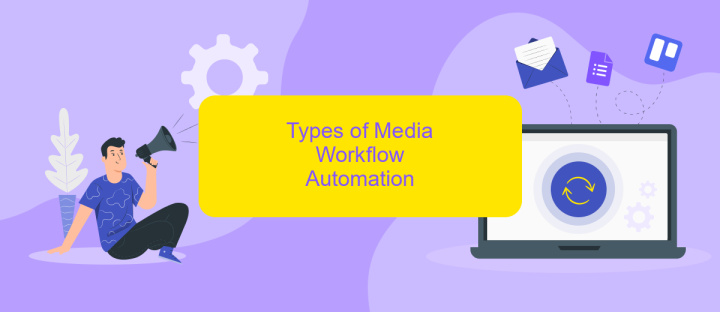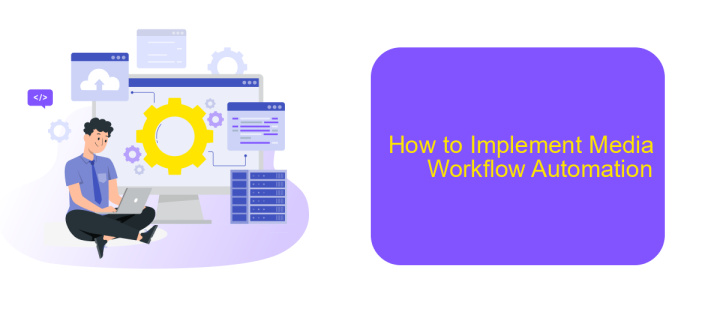Media Workflow Automation
In today's fast-paced digital landscape, media workflow automation has become essential for streamlining production processes and enhancing efficiency. By leveraging advanced technologies, organizations can automate repetitive tasks, reduce human error, and accelerate content delivery. This article explores the key benefits, tools, and strategies for implementing media workflow automation to stay competitive in an ever-evolving industry.
Introduction
In today's fast-paced media landscape, efficiency and accuracy are paramount. Media workflow automation has emerged as a vital solution to streamline operations, reduce manual tasks, and enhance productivity. By automating repetitive processes, media companies can focus on what truly matters: content creation and audience engagement.
- Reduction of manual errors
- Increased operational efficiency
- Enhanced collaboration among teams
- Cost savings and resource optimization
One of the key components of media workflow automation is the integration of various tools and services. Platforms like ApiX-Drive facilitate seamless integration between different applications, allowing for smooth data flow and synchronized operations. By leveraging such services, media companies can achieve a more cohesive and efficient workflow, ultimately leading to better content delivery and improved viewer satisfaction.
Benefits of Media Workflow Automation

Media workflow automation significantly enhances efficiency by streamlining repetitive tasks and reducing human error. Automated processes ensure that media files are ingested, transcoded, and distributed without manual intervention, which saves time and resources. This allows creative teams to focus on content creation rather than administrative tasks, leading to higher quality outputs and faster project turnaround times.
Another key benefit is the seamless integration of various tools and platforms through services like ApiX-Drive. ApiX-Drive facilitates the automation of data transfers between different applications, ensuring that all components of the media workflow are synchronized and up-to-date. This results in a more cohesive and efficient workflow, minimizing bottlenecks and enhancing overall productivity. By leveraging such automation tools, companies can better manage their media assets, improve collaboration, and ultimately deliver a superior product to their audience.
Types of Media Workflow Automation

Media workflow automation is essential for streamlining processes and increasing efficiency in the media industry. There are several types of media workflow automation that can be implemented to optimize various aspects of media production and distribution.
- Content Ingestion Automation: Automates the process of importing media files from various sources, ensuring that they are properly formatted and stored.
- Editing Workflow Automation: Utilizes software to automate repetitive editing tasks, such as color correction, audio leveling, and basic cuts.
- Metadata Management Automation: Automatically generates and manages metadata for media files, improving searchability and organization.
- Distribution Workflow Automation: Streamlines the process of distributing media content across multiple platforms, ensuring timely and accurate delivery.
- Integration Automation: Services like ApiX-Drive facilitate the integration of various tools and platforms, allowing for seamless data transfer and process synchronization.
Implementing these types of media workflow automation can significantly reduce manual labor, minimize errors, and enhance overall productivity. By leveraging tools and services designed for automation, media companies can focus more on creative tasks and less on operational inefficiencies.
How to Implement Media Workflow Automation

Implementing media workflow automation can significantly streamline your processes, reduce human error, and increase efficiency. To begin, it's important to map out your current workflow and identify repetitive tasks that can be automated. This will give you a clear understanding of where automation can have the most impact.
Next, choose the right tools and platforms that align with your needs. Look for solutions that offer robust integration capabilities, such as ApiX-Drive, which can help you connect various media tools and automate data transfer seamlessly.
- Identify repetitive tasks in your media workflow.
- Select automation tools that support integration, like ApiX-Drive.
- Set up and configure your chosen tools.
- Test the automated workflow to ensure it functions correctly.
- Monitor and optimize the workflow as needed.
Once your automated workflow is in place, continually monitor its performance and make adjustments as necessary. Regularly updating and optimizing your automation tools will help maintain efficiency and adapt to any changes in your media processes.
Case Studies and Examples
One notable case study in media workflow automation is from a leading news organization that streamlined its content production process. By integrating various tools and platforms using ApiX-Drive, the organization was able to automate the transfer of media files, metadata, and publishing tasks. This not only reduced manual labor but also significantly cut down on errors and delays, resulting in a more efficient and reliable workflow.
Another example comes from a digital marketing agency that leveraged media workflow automation to enhance its social media campaigns. By setting up automated processes with ApiX-Drive, the agency could seamlessly integrate data from multiple sources, such as CRM systems, social media platforms, and analytics tools. This allowed for real-time updates and more accurate performance tracking, ultimately leading to better campaign results and improved client satisfaction.
FAQ
What is Media Workflow Automation?
How can Media Workflow Automation benefit my organization?
What types of tasks can be automated in a media workflow?
How do I integrate different tools and platforms in my media workflow?
Is Media Workflow Automation scalable?
Apix-Drive is a simple and efficient system connector that will help you automate routine tasks and optimize business processes. You can save time and money, direct these resources to more important purposes. Test ApiX-Drive and make sure that this tool will relieve your employees and after 5 minutes of settings your business will start working faster.

